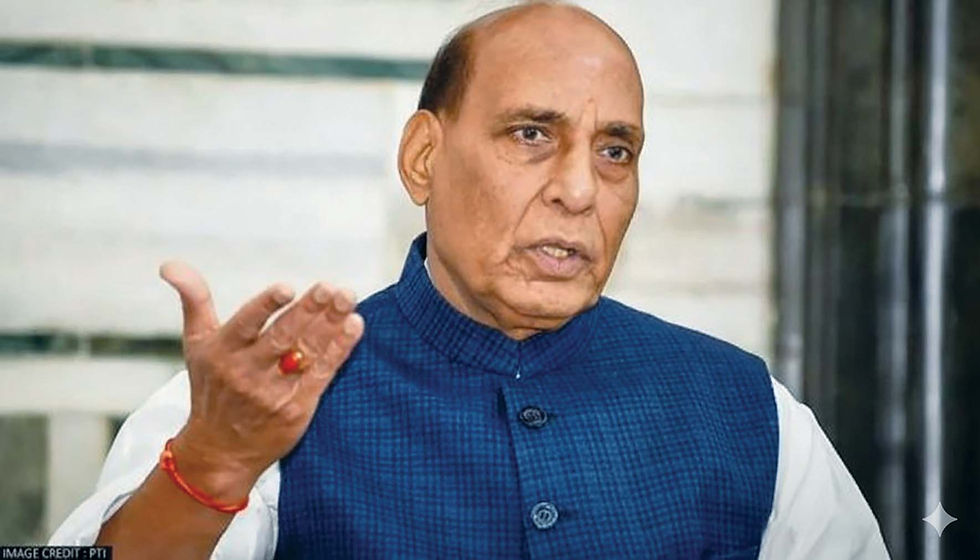Black Boxes, Clouded Truths: Why the Flight 171 Inquiry Must Be Above Suspicion
- Commodore S.L. Deshmukh

- Jul 21
- 4 min read
India’s worst aviation disaster in recent memory has put its crash investigation agency and Boeing under an intense global spotlight.

The Air India Flight 171, which crashed shortly after take-off from Ahmedabad on June 12, killing more than 260 people including those on the ground, has triggered renewed scrutiny of India’s aviation safety regime and Boeing’s aircraft design. The preliminary findings released by the Aircraft Accident Investigation Bureau (AAIB) point to a sudden loss of engine power, raising questions about possible system malfunction or human error. But the report’s omissions - such as the absence of a full cockpit voice transcript - and the manner of its initial disclosure abroad have raised concerns about transparency and institutional independence.
This was the first major crash of a Boeing 787 Dreamliner, a type already plagued by safety concerns, and India’s worst aviation disaster since the crash of Air India Express Flight 1344 in 2020. But beyond the tragedy, Flight 171’s crash has triggered an uncomfortable reckoning over India’s ability to investigate such catastrophes independently, and Boeing’s persistent software demons.
The AAIB, formed in 2022 to meet international standards, is responsible for investigating all accidents in Indian airspace. Modelled on independent agencies like America’s NTSB or France’s BEA, the AAIB is meant to operate free from regulatory interference. Its remit is to uncover causes, issue recommendations and above all, to restore public faith.
For the first few days after the crash, that mandate was tested like never before as conspiracy theories proliferated. Was the cockpit voice recorder (CVR) compromised? Were the flight data recorders (FDR) shipped overseas for analysis? Did the AAIB even have the tools to conduct an advanced technical inquiry? Though the government clarified that the ‘black boxes’ were being decoded in India itself at a new lab commissioned in April 2025, public confidence took a bruising.
Then came the preliminary report, published a month after the crash, which answered some questions and raised many more. According to the AAIB, Flight 171 had taken off normally, reaching 180 knots shortly after crossing V1, the decision speed. But within 10 to 15 seconds, both the left and right engine fuel cutoff switches flipped from RUN to CUTOFF, one after the other. The result was instant loss of thrust and lift. Seconds later, the aircraft slammed into the ground.
The cockpit recording captured a chilling exchange between the pilots. One asked the other why he had cut the fuel. The other’s reply was “I didn’t do it.” It is an answer that has only succeeded in aggravating the mystery. The preliminary report refrained from assigning blame or suggesting a cause for the fuel cutoff, triggering speculation about whether it was pilot error, a mechanical fault or something altogether more sinister.
The biggest controversy, however, stemmed not from what the report said but where it first appeared. News of the preliminary findings leaked to the American press before being officially released in India. Aviation unions cried foul. The Federation of Indian Pilots condemned the selective disclosure and accused the AAIB of mishandling the narrative. Critics asked as to why wasn’t the full cockpit transcript made public? Was the investigation already being shaped by external forces?
That accusation points to a deeper anxiety of India’s ability to withstand pressure from American regulatory agencies, from Boeing itself and from a breathless global media. The government, for its part, has urged restraint until the final report is ready. But the damage has been done as doubts now hang not just over Boeing’s engineering, but also over India’s institutional robustness.
There is historical reason for concern. Boeing’s reputation has been in freefall since two 737 MAX crashes in 2018 and 2019 killed 346 people, exposing serious failings in its design, testing, and relationship with American regulators. The 787 Dreamliner, though considered more sophisticated, has also had its share of gremlins. In 2019, an All Nippon Airways 787 suffered a harrowing incident mid-air when its system erroneously shut off fuel to the engines. The culprit was a software feature called the Thrust Control Malfunction Accommodation (TCMA) system, designed to handle throttle failures. Instead, it nearly caused a catastrophe.
Whether the same TCMA software played a role in the Flight 171 crash remains to be seen. But given its record, AAIB’s investigators would be remiss to overlook the possibility. A software-induced command to close fuel valves could explain the mysterious engine shutdowns. And if that is indeed what happened, it would not be the first time Boeing’s automation triumphed over human control with fatal consequences.
The final AAIB report will need to ask hard questions of Boeing’s design logic, its software validation protocols, and the Dreamliner’s intricate systems. Equally, it must stand firm against political, commercial or diplomatic attempts to soften its conclusions. An investigation that fails to identify root causes or ducks systemic failings will be no better than a cover-up.
India now has the tools. It must also show the spine. The AAIB’s mandate, after all, is not to shield reputations but to save future lives. Every checkbox in ICAO’s Annex 13 (the global protocol for accident investigations) demands impartiality and transparency. Investigators must chase every lead, however inconvenient.
As Captain A.G. Lamplugh, a British aviation pioneer, once said, “Aviation in itself is not inherently dangerous. But to an even greater degree than the sea, it is terribly unforgiving of any carelessness, incapacity or neglect.” In the case of Flight 171, that warning has come home with brutal force. The least India can do for the lives lost is to ensure that justice takes wing even when aircraft do not.
(The writer is a retired naval aviation officer and defence and geopolitical analyst. Views personal.)





Comments